Journaling Ideas to Finding Bliss
Jul 24, 2020 / The Twelve Mysteries / carl jung / Joseph Campbell

Buy a Print
or License image
The pandemic lockdown is an opportunity to journey inward to find your bliss. It’s easy to say, but where do you actually start?
I believe that keeping a journal is key to finding your bliss.
In this article, I share journaling ideas and techniques I’ve picked up over the years from trying different approaches, such as diaries, morning pages, daily planners, productivity journals, bullet journals, and habit-tracking journals. Who knows, maybe these ideas might finally convince you of the habit of journaling!
Why Journal?
In the beginning, I journaled to be more productive. It was all about the to-do lists, defining goals, and tracking appointments. All these things are important, and I still do a little bit of these, but over the years, I started to journal to find my bliss or my soul’s calling.
Recently, I came across a Carl Jung quote that brought it all home for me:
“I should advise you to put it all down as beautifully as you can, in some beautifully bound book….Then when these things are in some precious book you can go to the book & turn over the pages & for you it will be your church一your cathedral一the silent places of your spirit where you will find renewal. If anyone tells you that it is morbid or neurotic and you listen to them一then you will lose your soul一for in that book is your soul.”
— Carl Jung, The Red Book, p216
I know it sounds very new age and crazy, but I believe Jung. A journal can be a place of renewal.
Now, suppose for a moment that a journal is one’s personal cathedral, how do you actually build it? Here’s how I’m building mine.
Anatomy of My Journal
Before we go any further, I want to say that you don’t have to follow anything I say below. Experiment with what works for you. It’s your own personal cathedral, after all, so you can build it in any way you want. Try different methods until you settle on something that works for you.
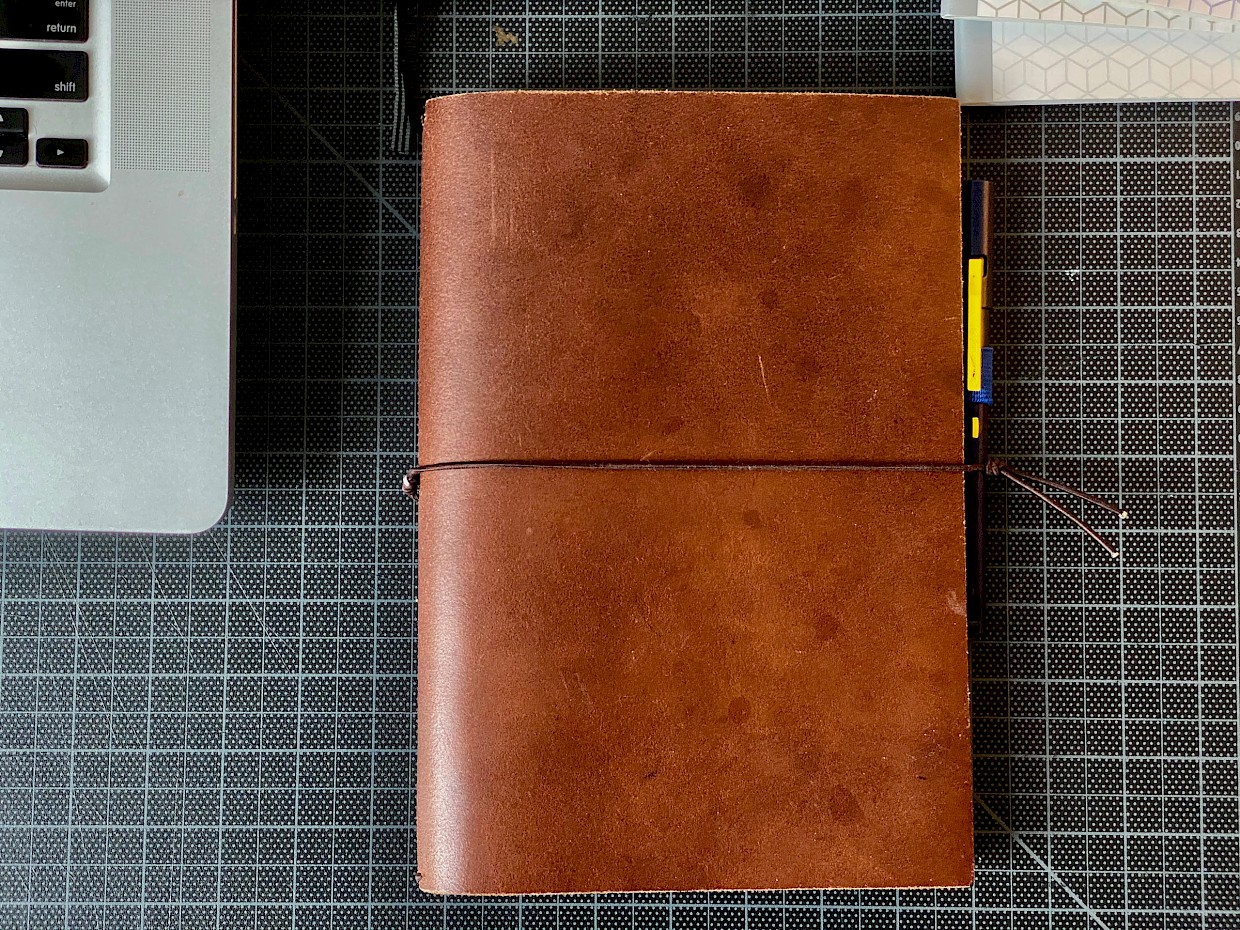
Leather Cover
I made this leather journal cover three years ago by watching a YouTube video. I bought the raw leather from an Etsy vendor. Just search for “leather journal,” and you should find some good sources. I really like this cover because it’s beautiful, timeless, and reusable. The leather patina will just look better over time.
Journal Pages
For my journal, I’m currently using the Neolab smartpen journal and a Neo smartpen M1 (affiliate links). What’s great about this system is that it syncs with a smartphone app so that I have electronic copies of my journals. I’m always afraid that I will lose my physical journals so this gives me some peace of mind.
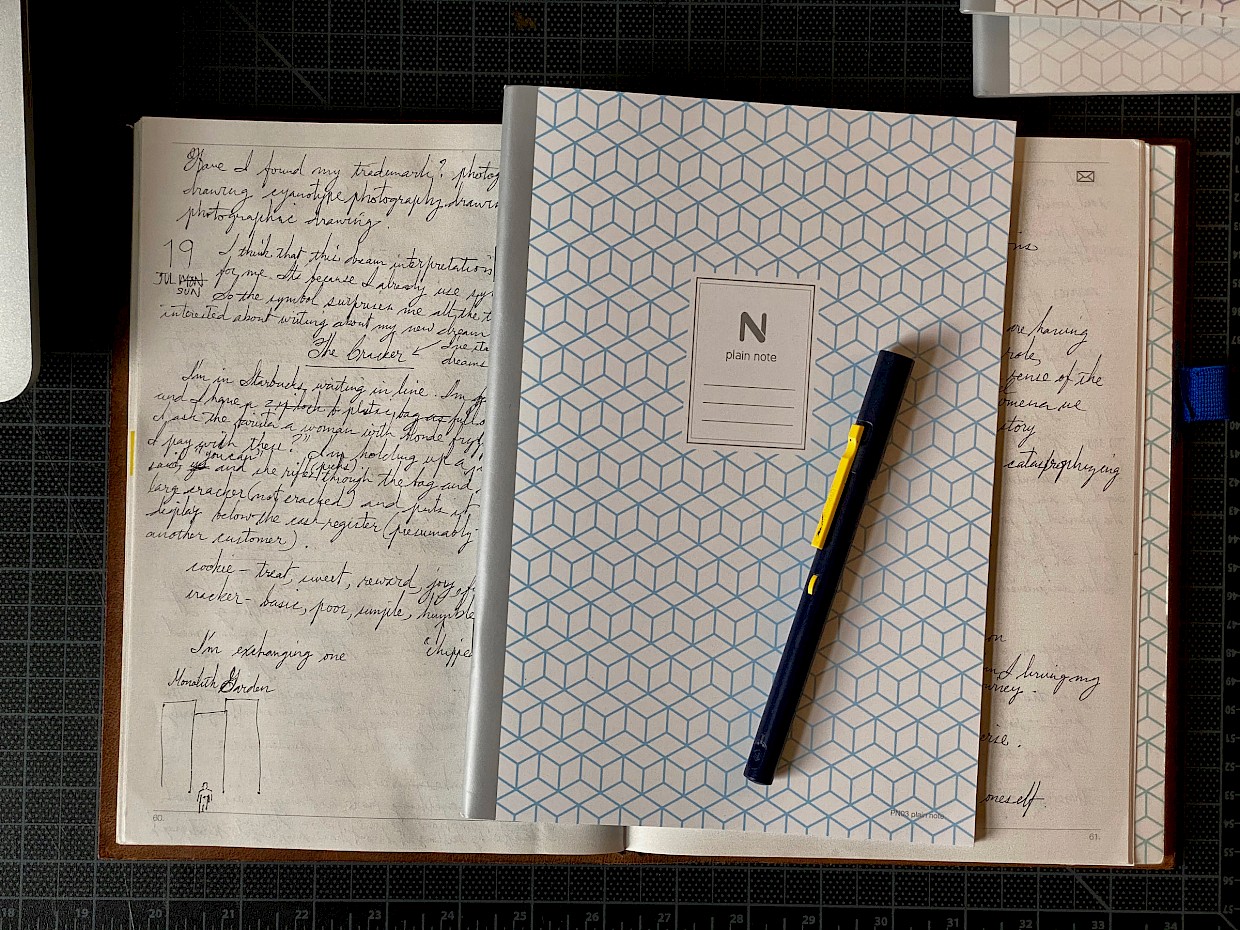
Neo Smartpen Journal
A Neolab journal has 70 blank pages, which is enough for three months of daily entries. So that works out to four journals a year. I plan to beautifully bind these four journals into one book following Jung’s suggestion. I’ve never done this before, so I’m excited about this idea. I’ll take a bookbinding course toward the end of the year and write about this. Subscribe to my blog so that you don’t miss it!
Neo M1 Electronic Pen
The M1 is a rechargeable pen that has a tiny camera that records your writing on the dot-filled Neopen paper. The dots are microscopic, so Neopen paper just looks like blank paper. For ink refills, I like the Black Uni Jet Stream Ballpoint Pen 0.5mm SXR-200-05 (affiliate link). It almost looks like fountain pen ink. Years ago, I received a fountain pen as a gift. I loved it so much that I learned the Spencerian script using a DIY course. I love using the fountain pen, but unfortunately, I had to give that up when I switched to the Neo smartpen system.
Other Journal Alternatives I’ve Used
- Leuchtturm1917 Medium A5 Dotted Hardcover Notebook. I really like this 249-page regular notebook. It’s smaller than my current setup, and it already has a black cover. You can use a regular pen with this one (even a fountain pen!). You would need two of these notebooks to cover an entire year.
- Leuchtturm1917 Whitelines version. This one allows you to combine the benefits of analog and electronic. You can use any pen, but the paper is gray in color. You can use the Whitelines phone app to photograph, save, and share each page.
- Moleskine journal. I love these journals too. They are narrower than the Leuchtturm. This one I link to works with the Neo M1 pen.
- Any regular notebook. I started out with three-hole punched paper and free notebooks from conferences. When starting out and experimenting, this is a great option.
What to Write in Your Journal
Now that you have your journal setup, what do you actually write in it?
Journaling to find your bliss takes a lot of work. (Years later, Joseph Campbell would say that he should have said “follow your blisters” instead of “follow your bliss.”) Journaling is a way to tune into your inner “radio station.” Inevitably, what happens is that this inner radio station will play the following songs:
- Childhood dreams you’ve forgotten
- Ideas that constantly repeat themselves
- Synchronicity and coincidences
- Epiphanies
- Future plans/ideas of all kinds (blog posts, image ideas, project ideas, life goals)
You become very excited. I mean, these are great things to listen to and write about, right?
But then the following will also go into rotation:
- Childhood insecurities & trauma
- Resistance, procrastination, jealousy
- Critical parts of yourself will emerge (inexplicably sounding like your father or mother)
You’ve now encountered your dragons (a term borrowed from Steven Pressfield). You have to either slay them or be slain by them. Some people can’t handle these and turn to drugs, alcohol, and a myriad of soul-immolating remedies. But not you and me. Instead, these are journal ideas we’ll write about!
Morning Pages
I write in my journal every morning during breakfast. It could be three sentences or three pages. It really depends if something from the above list came up the day before. I write first thing in the morning as I feel it sets me up in the right frame of mind for the rest of the day. Experiment what time of the day works best for you.
But what if nothing came up the day before? Then I write about nothing. Julia Margaret Cameron recommends a practice that she calls morning pages:
“Put simply, the morning pages are three pages of longhand writing, strictly stream-of-consciousness: ‘Oh, god, another morning. I have NOTHING to say. I need to wash the curtains. Did I get my laundry yesterday? Blah, blah, blah…’ They might also, more ingloriously, be called brain drain, since that is one of their main functions.”
— Julia Margaret Cameron, The Artist’s Way, A Spiritual Path to Higher Creativity, p9-10.
I’ve been writing morning pages on and off for 20 years. For me, morning pages are effective in addressing creative stumbling blocks like negative thinking.
In the beginning, I religiously wrote three pages of nothing. Around 2011 (when I started my MFA degree), I shifted away from this strict practice to writing about the topics I mentioned above. I recommend Julia Cameron’s book if you are intrigued by creative tools like morning pages. By the way, another tool she recommends is the artist date, which I wrote about in You Can Still Travel—With your Instant Pot.
Based on the above discussion, you can probably imagine that my journal is mostly pages and pages of writing, and you would be correct!
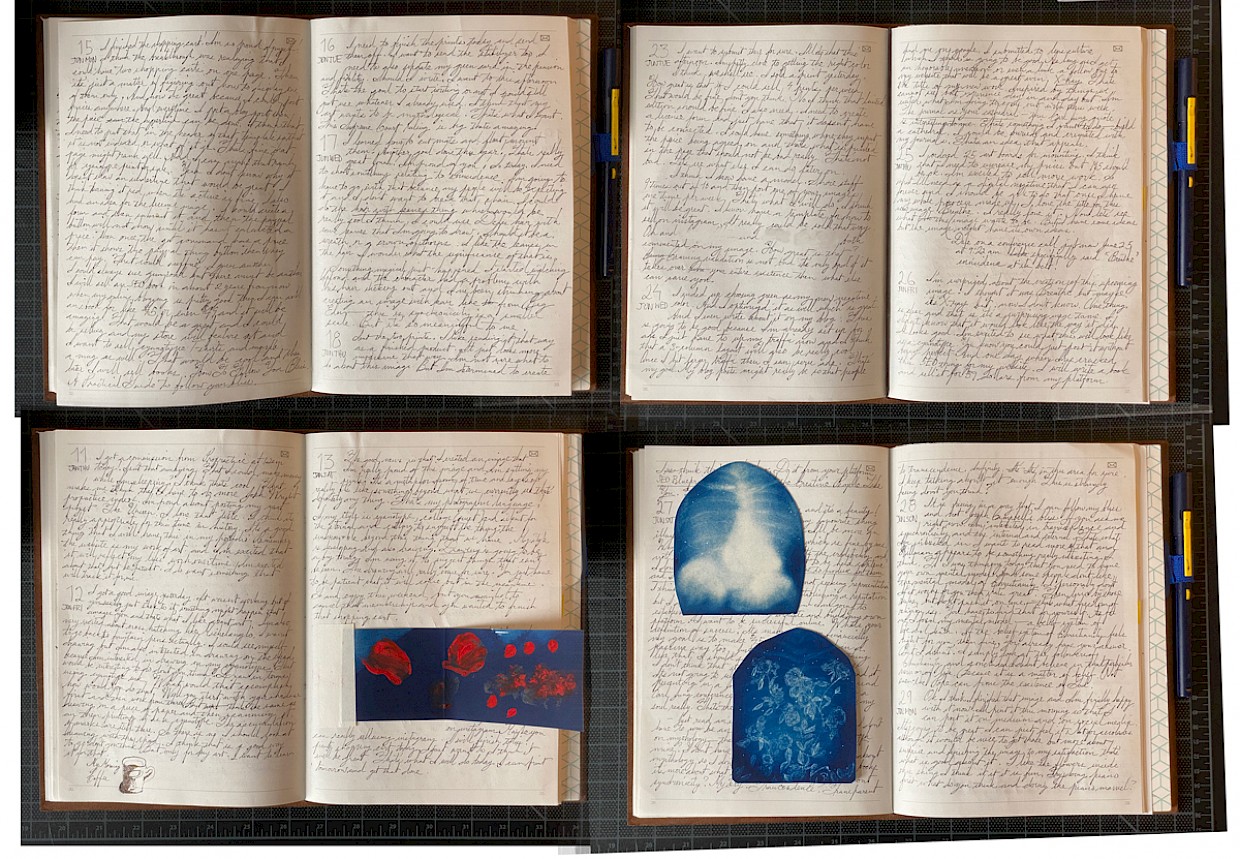
Remember, there is no “right way” to journal. It’s your own cathedral. Build it however you want. For this reason, I don’t recommend using day planners or fill-in-the-prompt journals. Start with a blank page.
Other Journal Pages
It’s time to talk about the other pages that you might want to include in your journal. Some of these are remnants of journal approaches that worked for me in the past. For example, I really like Ryder Caroll’s bullet journal method. Some of the pages I suggest below come from that approach.
Yearly Goals
The first page of my journal is a list of goals. I shared this page before when I wrote about my 2020 Goals. I re-write these goals every time I start a new quarter. I put an “X” beside the completed goals. This page is a constant reminder of what I want to accomplish in a given year.
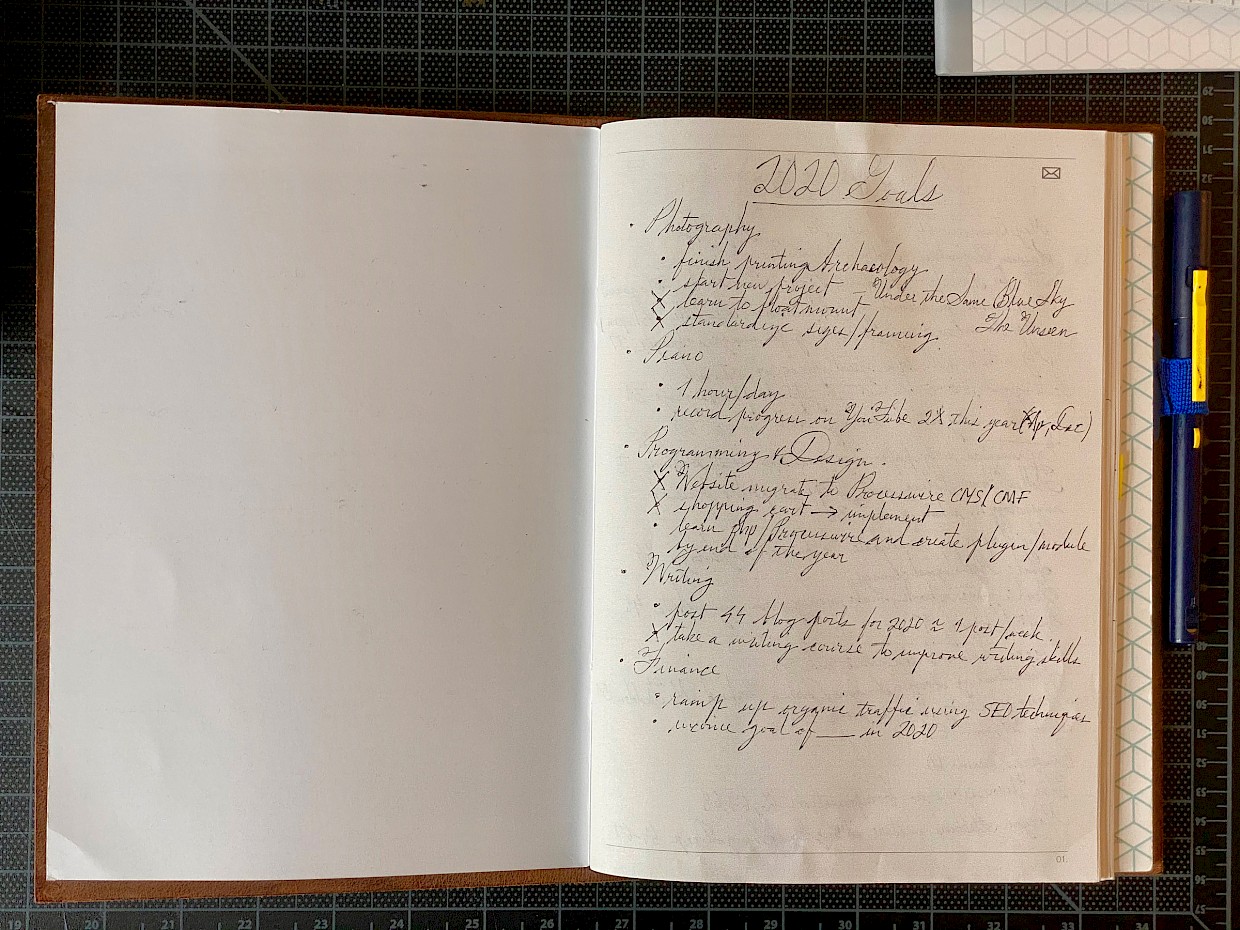
Table of Contents
How do I find anything in my journal pages? The table of contents is very important. I write down anything that I feel I want to quickly reference later: what page each month starts at, monthly dashboard pages, pages where I write about specific synchronicities, dreams, epiphanies, etc. Imagine an index of a book. That’s what you’re after.
Monthly Dashboard View
I loosely track what I do every day. This dashboard is particularly useful during the pandemic when the days just blend together. I can’t remember what I did yesterday, much less last week! I used to track my time more closely using time trackers and the Pomodoro technique, but they were too detailed. I only want a high-level sense of where I spend my time relative to my yearly goals. This monthly dashboard works great for that.
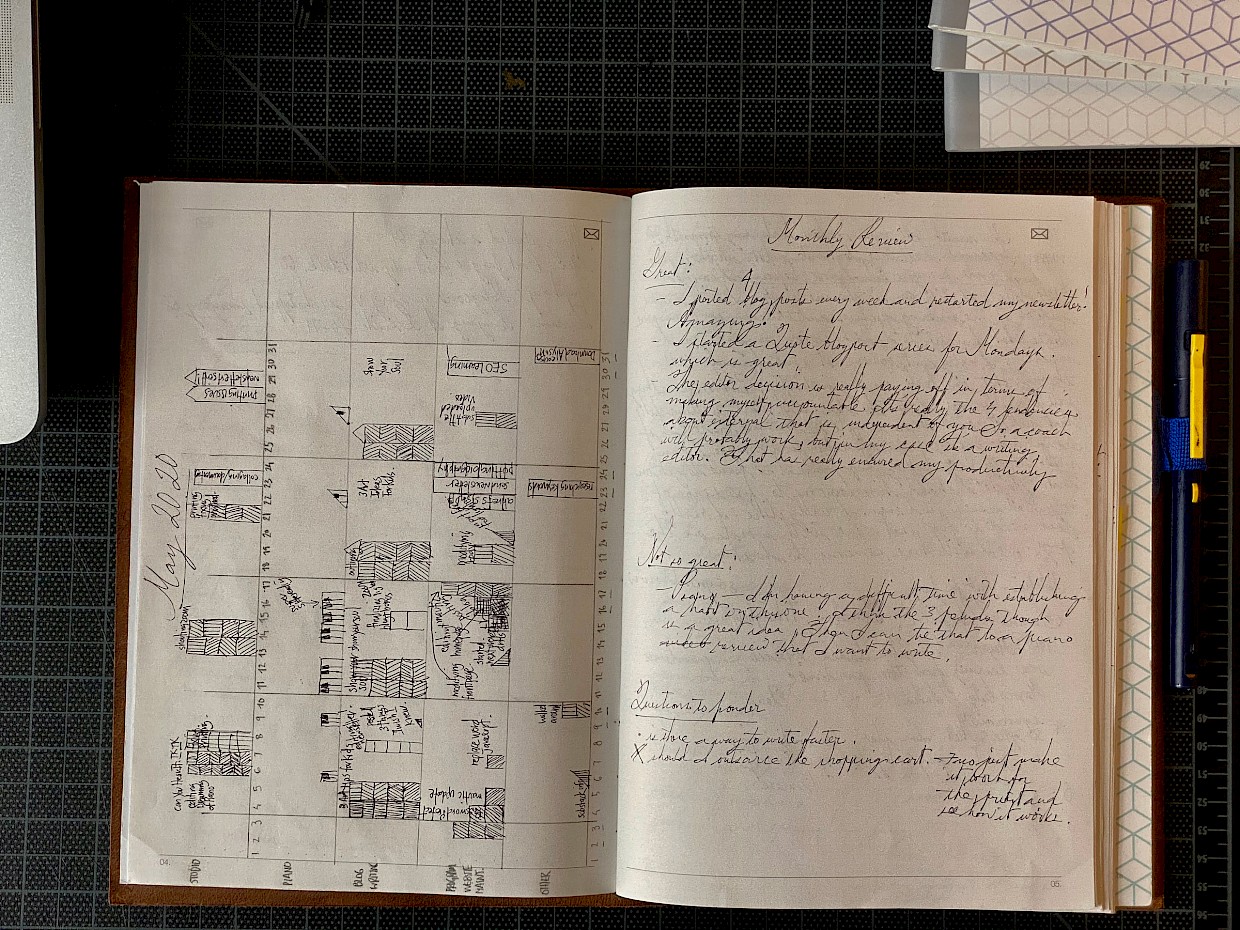
At the end of each month, I do a monthly review of what went well, what didn’t go well, and how to improve the following month. Some people do this review weekly, which is too much for me, but that might work for you. Try it out. Looking at the month of May for example, I spent a lot of time doing photography and writing (great!), but not so much in playing the piano (not great!). I needed to improve in June. Unfortunately, I didn’t succeed, so I’m trying again in this month (still not great).
A Separate Collections Journal
If you’ve read this far, you will have concluded that a topic or theme (e.g., synchronicity events) will be spread throughout the four quarterly journals, depending on what day it happened. Therefore, it’s cumbersome to find them later. An alternate way is to group similar entries together into “collections” as Ryder Carroll’s bullet journal approach recommends. Instead of recording the synchronicity in a daily entry, you write it down in a separate “collections” journal.
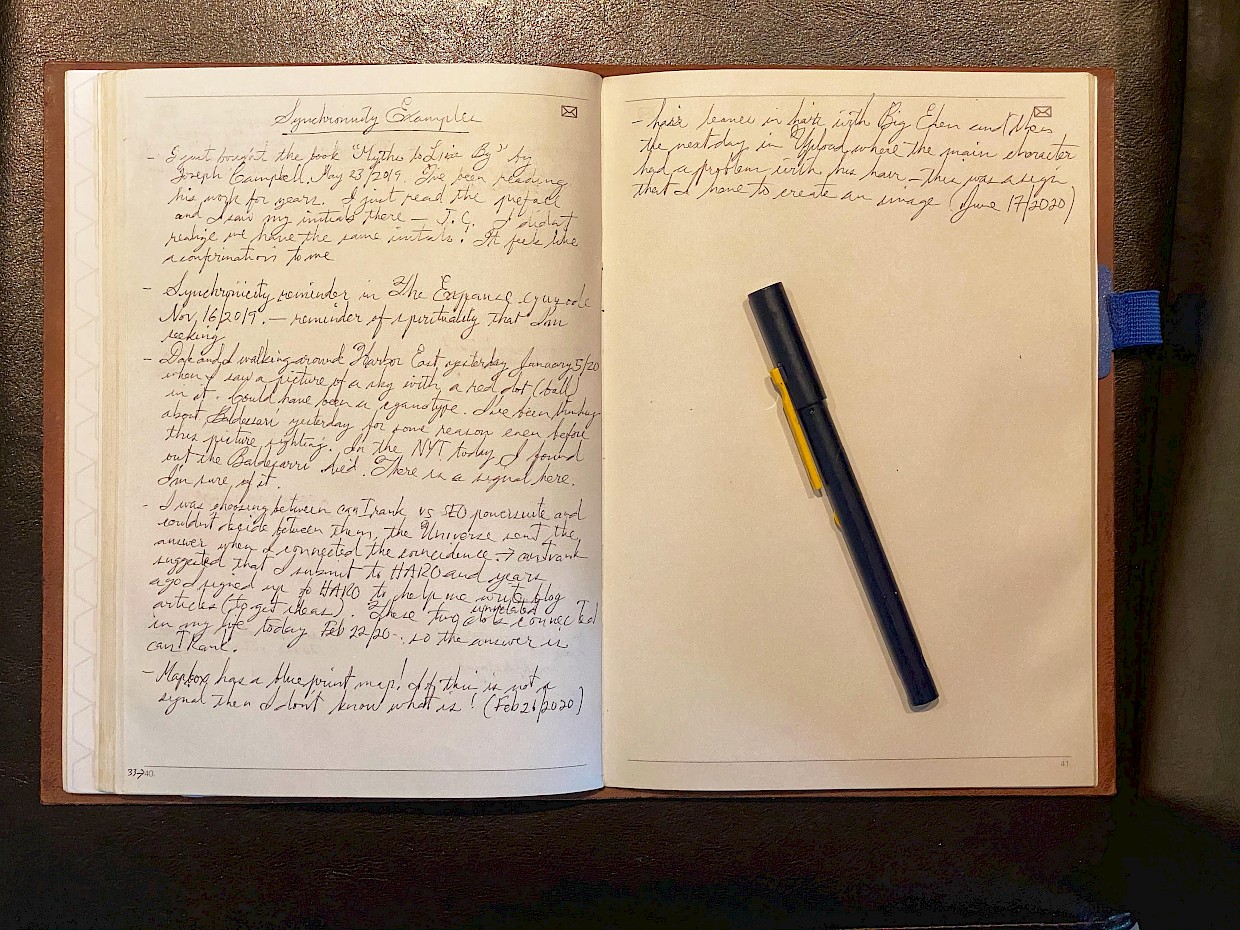
The benefit of this approach is that all the synchronicity entries can easily be read one after the other without flipping back and forth between the index and the daily pages. This approach facilitates insight and epiphanies. Also, the collections journal can be carried forward in my leather binder from year to year until the collections journal is full. Note that the collections journal will also have its own table of contents.
What About Drawings & Pictures?
Some people spend a lot of time drawing and making their journals beautiful. I never understood this desire as I’d rather be shooting photographs and creating art. However, after encountering Jung’s recommendations, I’ve changed my mind. This is an area that I will definitely be improving on. So, if you’re inclined to embellish and make your journal beautiful, I’ll be right there with you! Carl Jung’s drawings in his Red Book are inspirational.
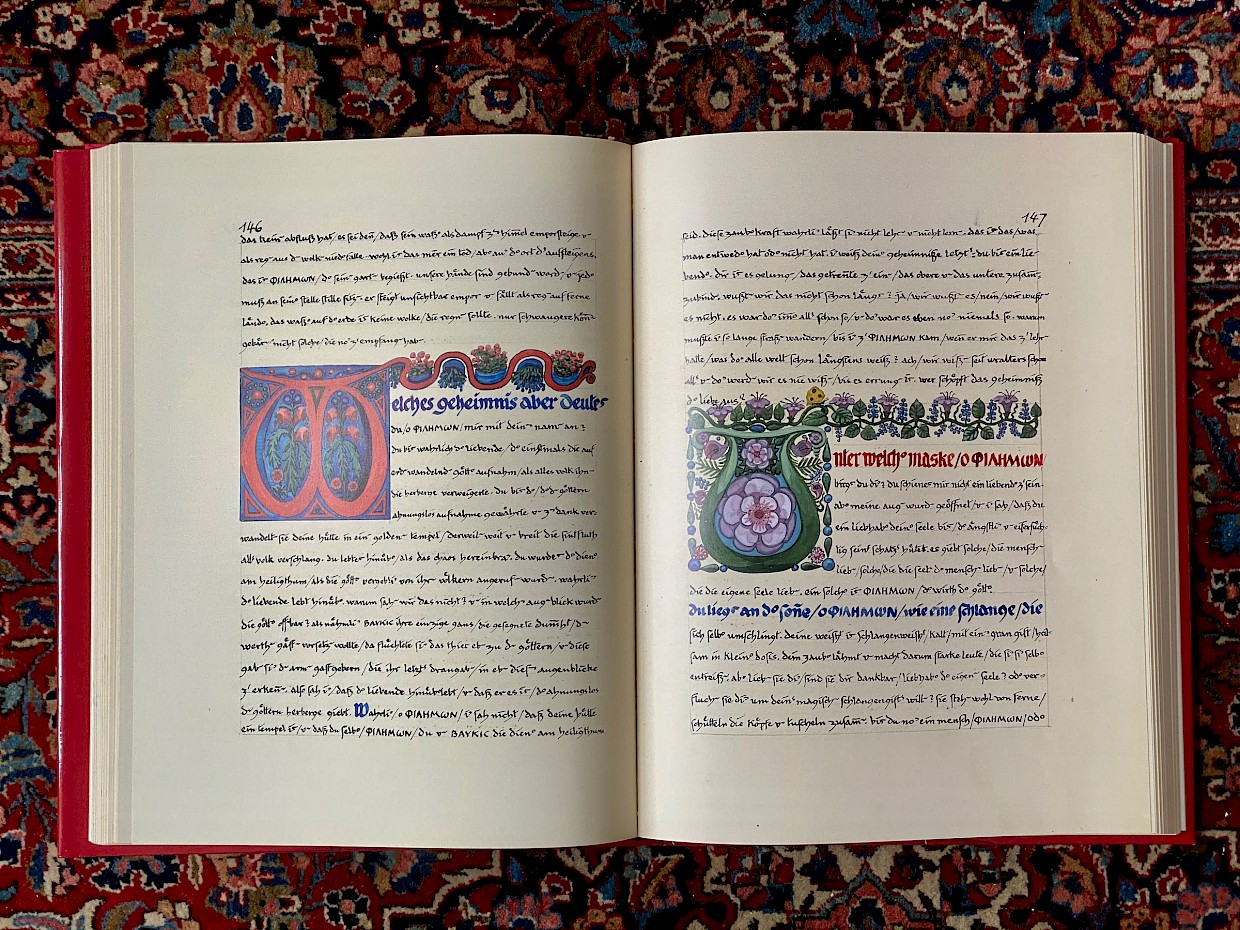
Finding Bliss Through Journaling
You now have journaling ideas on how to journal for finding bliss or in less lofty terms, self improvement. Begin with a simple notebook, read this article and How to Follow Your Bliss as background, and then just start writing! Go build that cathedral.



